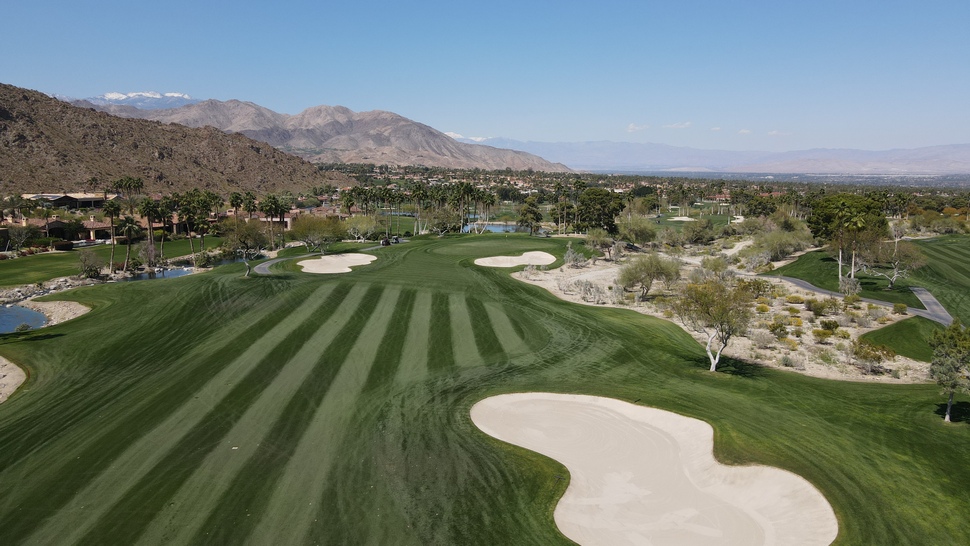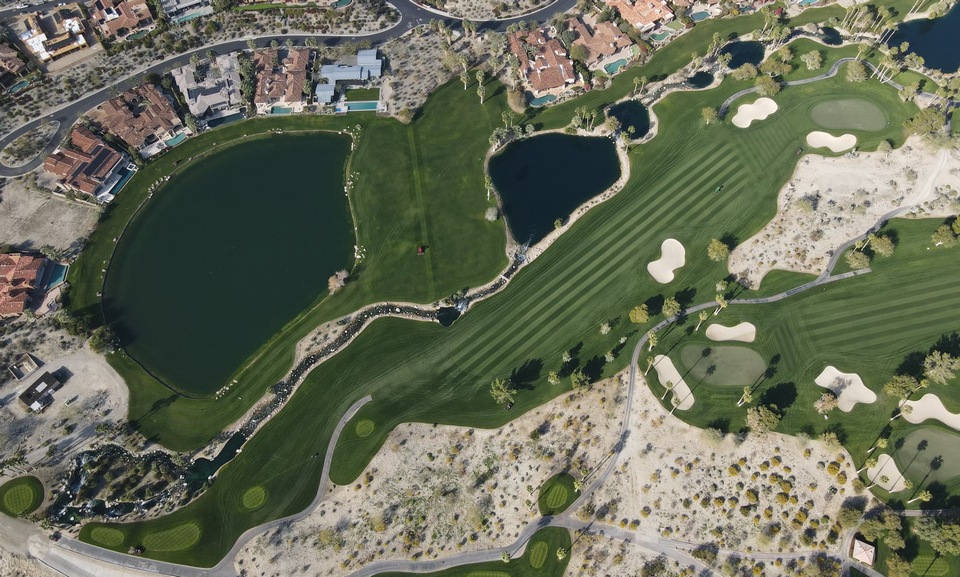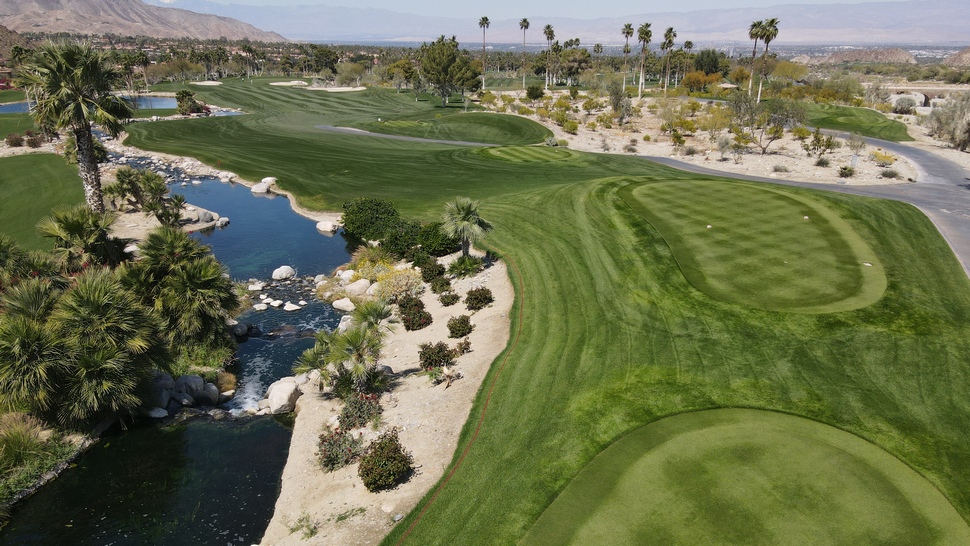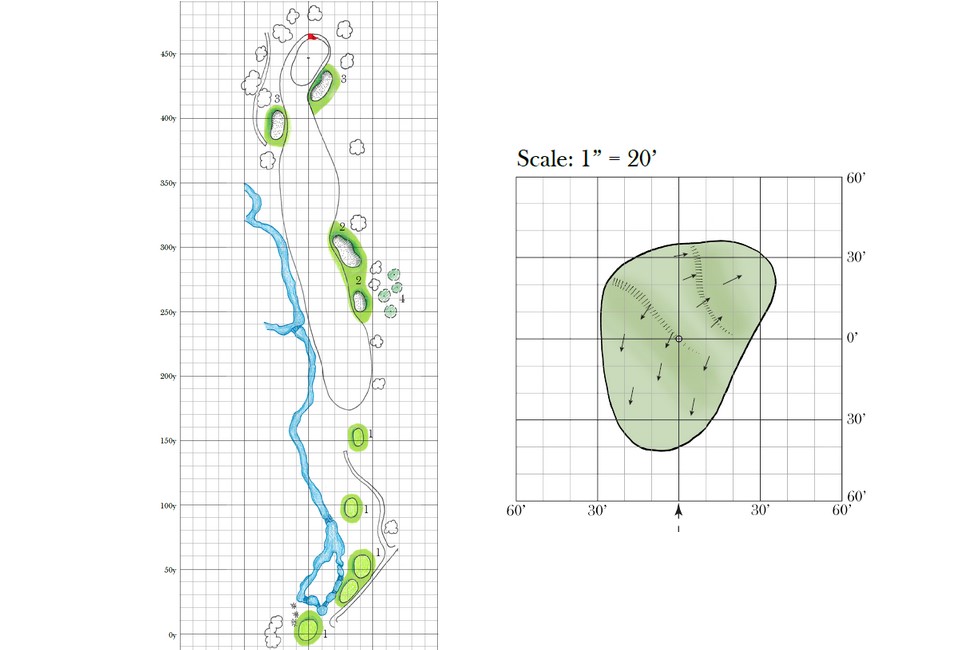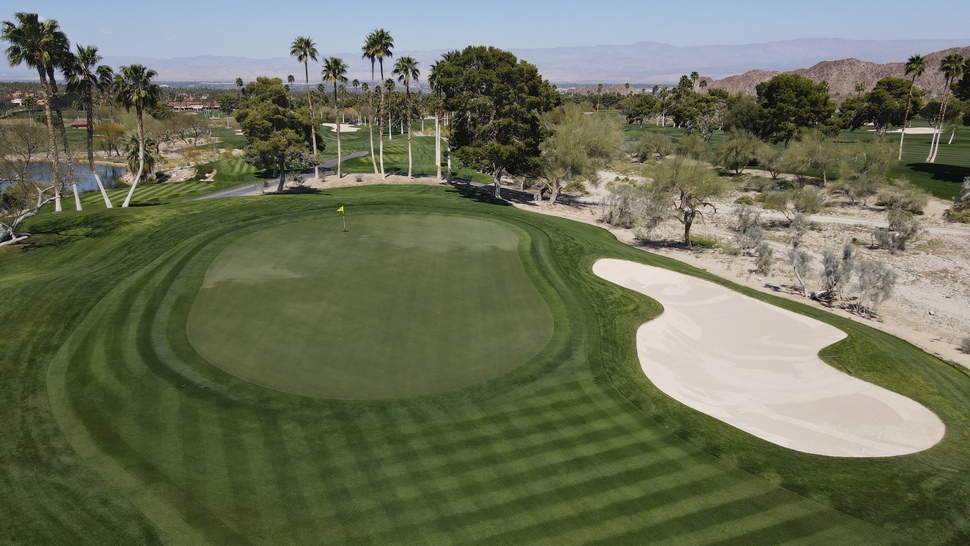Architects: Desmond Muirhead with Arnold Palmer consulting and later Ted Robinson (1977)
Most recent updating – John Fought (2023)
The Coachella Valley comprises a number of California desert communities located approximately just over 100 miles from Los Angeles. The close proximity provided an ideal getaway for a range of well-connected individuals from Hollywood and other deep-pocketed types to provide the ground floor for its rapid ascendancy as a most favored destination to unwind, rest and relax.
The communities that encompass the area are protected from the west by the Santa Rosa Mountains which serve as a shield against various Pacific-based storms that impact coastal Southern California but rarely penetrate the aforementioned barrier.
Golf found a fertile foundation because of the year-round favorable weather – especially in the winter months when snowbirds from distant cities sought the oasis provided.
The Coachella Valley is home to 125+ golf facilities comprised mainly of private clubs, resort-oriented offerings and a smattering of daily fee facilities – several of which are operated by the host community.
A select number have served as host to various professional events most notably the former Hope Classic on the PGA TOUR which was initiated in 1960 and is now called The American Express.
Women professionals also made their presence known starting in 1972 and continuing through 2022 as the event became known as The Dinah Shore and one of women’s major championships.
Other venues have made their mark with various staged televised events most notably with the playing of the Skins Game through the rigors of the Stadium Course at PGA West.
But the golf side has also meant other courses toiling at various levels of outside anonymity – although known to aficionados for the challenges presented.
Ironwood CC in Palm Desert is wonderfully tucked away not far off Highway 74, the main roadway which provides a back door entrance from coastal counties like Orange and San Diego to the Coachella Valley.
The 36-hole facility comprises two 18-hole layouts – the North and South. Each was originally done by Desmond Muirhead and has gone through various upgrades since. The most recent work is the handiwork of John Fought.
The South is the championship 18 and the course has hosted various key events over the years including U.S. Open and PGA TOUR qualifiers.
Unlike a plethora of courses situated in the desert – real estate is not the prime emphasis. For that central reason the golf experience is considerably heightened without having to have such mindless clutter.
The topography provides sufficient movement and the routing forces players to make constant adjustments during the round.
Nine holes are situated on either side of a desert wash that splits the layout.
When players make the final trek across the wash for the concluding trio of holes they immediately encounter one of the very best holes found in the Coachella Valley area.
Arriving at the 16th you are struck by the stark natural desert environment that lies immediately north of the property.
The slightly elevated tee provides a clear view of the strategic choices players must decide upon before hitting the tee shot.
A meandering stream turns into two ponds located on the left side of the drive zone and commands total respect. However, players bailing out too far to the right can encounter a solitary fairway bunker lurking.
The best approach angle is on the left side but then one must be ever mindful of the aforementioned penalty area on that side.
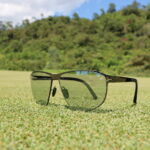
Related: Mike Shannon interview
While distance off the tee is always a plus the strength of the 16th begins with the equally pressing concern for proper placement.
Those securing the left side of the fairway are rewarded with a direct line to the putting surface. Pushing in from the right side is a diagonally-positioned greenside bunker. Any right-side pin placement places a heavy burden on players to avoid finishing on that short side.
A gentle roll bisects the middle of the green which provides movements forward to the front and causes the green to slope away – front-to-back – behind the roll. Approach shots have to be properly gauged to avoid a bevy of devilish movements that can prove hard to decipher without a series of past plays.
Wind patterns can vary but the general prevailing direction at the 16th is a headwind usually coming from the valley area to the north
Fought is planning to include bunker renovation for the South as well as on the adjoining North Course.
Even after a successful play at the 16th – golfers face a long demanding par-3 at the penultimate hole followed by a stout long two-shot hole for the closer.
Make no mistake about it – the South at Ironwood requires an iron will to succeed. If you dion’t earn it – you don’t get the reward. You see that superbly at the 16th.
***
For more info go to:
